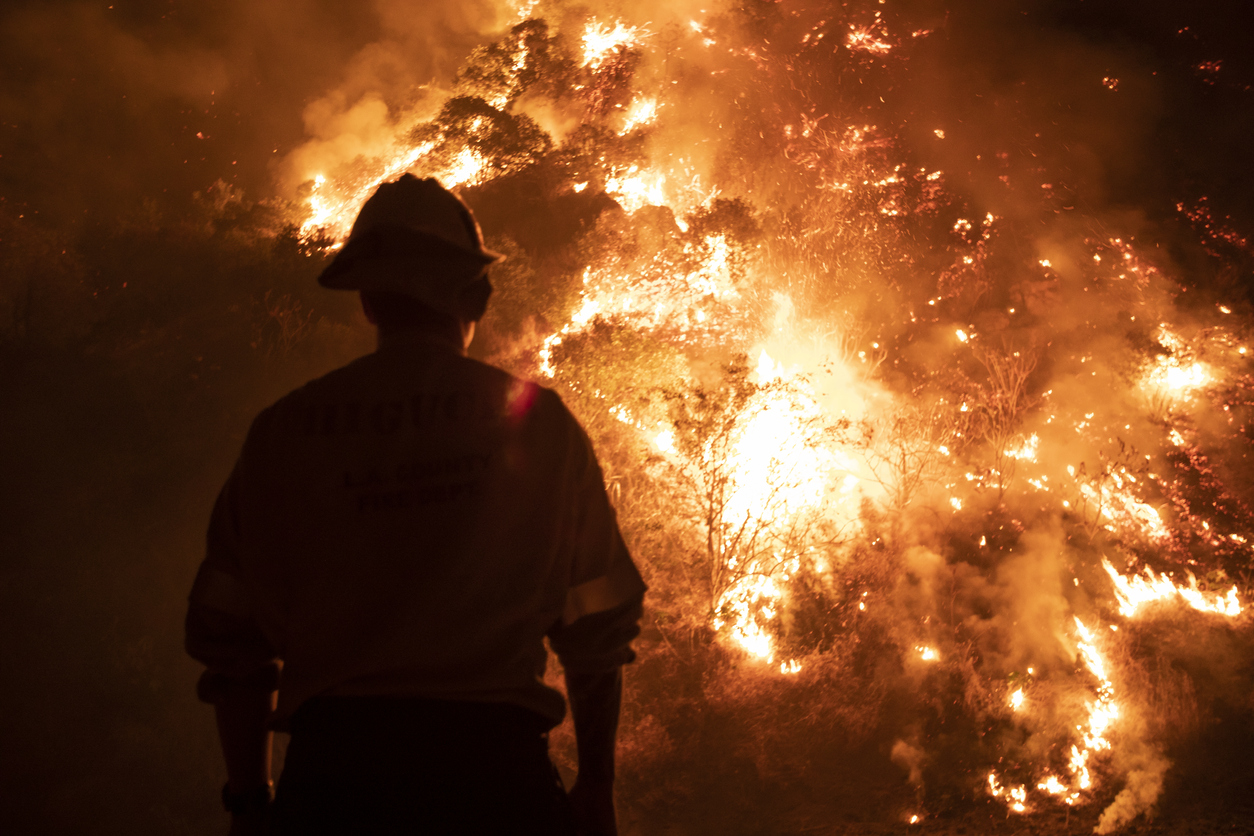The Marshall Fire, which swept through the suburbs between Denver and Boulder, Colo., last week, is expected to cause $1 billion in damage. Rebuilding the approximately 1,000 destroyed homes and repairing hundreds of others will put additional strain on already overburdened builders and supply chains.
Insurers believe that the majority of homeowners in the burned neighborhoods have adequate coverage for the majority of rebuilding costs. This is in contrast to the rural areas of Kentucky hit by tornadoes last month, where some working-class homeowners lacked insurance.
Labor shortages and the magnitude of the damage will make rebuilding more difficult in both places, according to Erin Collins, senior vice president of the National Association of Mutual Insurance Cos., a trade group. "There are people in both impacted areas who are either uninsured or do not have adequate coverage to compensate for their losses," she said.
According to surveys conducted by United Policyholders, a national nonprofit consumer advocacy group based in California, roughly two-thirds of fire victims are underinsured. A survey of people affected by wildfires in Colorado's Grand and Larimer counties in 2020 revealed shortages that frequently totaled hundreds of thousands of dollars.
According to Daniel Schwarcz, a professor at the University of Minnesota Law School who has studied homeowners insurance, one major cause is the difficulty for homeowners in determining how much coverage they need. Part of the problem is that consumers have a lot of options, and many of them choose cheaper policies to keep their annual premiums low.
"There is incredibly limited transparency" for buyers in determining what a limit should be, he said. According to him, many consumers believe that an agent or insurer has a financial incentive to sell them more coverage than they require. However, some agents promote lower-cost policies because they don't want to lose a sale to a competitor.
According to Amy Bach, executive director of United Policyholders, insurers are attempting to limit their potential losses in some disaster-prone areas. "We know of many cases where consumers request higher limits and are denied," she said.
According to disaster-modeling firm Karen Clark & Co., last week's fire was the most destructive wildfire in Colorado history in terms of the number of structures destroyed. Its insured damage estimate of $1 billion includes homes in the Louisville and Superior areas, as well as unincorporated Boulder County, as well as a large commercial area with a destroyed shopping center and hotel.
According to Colorado Insurance Commissioner Michael Conway, "there is likely to be an issue about underinsurance," which stems from both inadequate coverage amounts to begin with and the continuation of inflation. However, as construction begins over the next two years, "there will be so much in flux about inflation, building costs, labor costs that when we get to the point where we are rebuilding these homes, the world will likely look much different."
He mentioned that the Federal Emergency Management Agency provides some financial assistance for underinsurance, but that the agency typically does not act on a consumer's request until the carrier has completed its total payouts.
Insurers acknowledge that the proceeds from their policies will not always be enough to cover the damage, but they say their agents have worked hard in recent years, in the face of other high-profile disasters, to encourage the purchase of policies with the most generous terms.
The Denver-area housing market, like many others across the country, has been extremely hot in the last year. Low mortgage rates fueled robust home-buying demand, which far outpaced the number of available properties, driving up housing prices.
Builders increased activity in response, with housing starts in the Denver metro area increasing 30 percent year on year in the third quarter, according to housing-market research firm Zonda. However, labor shortages and supply-chain issues have slowed their progress. According to a National Association of Home Builders analysis of government data, the cost of home-building materials increased 21 percent in November compared to the previous year, while residential construction wages increased 8.1 percent in October compared to the previous year.
Due to limited land supply and higher regulatory costs, Boulder County is the most difficult and expensive area in the Denver metro area to build new homes, according to John Covert, principal of advisory at Zonda. As homes in Boulder have become more expensive, demand has increased in neighboring suburbs such as Louisville and Superior, he said.
Building costs are especially volatile in the current market due to supply-chain disruptions, according to David Sinkey, CEO of Boulder Creek Neighborhoods, a builder based in Louisville.
"Cost predictability is just about impossible right now," he said. "I think it's starting to dawn on a lot of people that the insurance coverage will be much lower than the current cost to build."
Underinsurance can cause construction delays, and some people whose homes were destroyed by wildfires in the Boulder area in 2020 have yet to rebuild. "My wounds were ripped open last Thursday, and I relived every moment of the trauma" of the fire that destroyed his Boulder home in October 2020, said Kevin Mott, a dermatologist who is currently living in a recreational vehicle.
His insurance was insufficient, so he had to postpone his rebuilding until he could secure financing. He had a $900,000 limit for the house itself, plus a $700,000 limit for the contents. According to him, his new home will cost around $2 million, including upgrades to meet new local building codes.
Except for insurers selling to wealthy homeowners, most carriers have abandoned once-common and relatively generous guarantees to pay the full cost of rebuilding. Instead, in the event of a shortfall, some policies offer a fixed amount, such as 20%, over the insured value of a dwelling.
Inflation protection is provided by many insurers, including State Farm and USAA. They do, however, continue to rely on homeowners to update their policies to account for remodeling or expansion.














